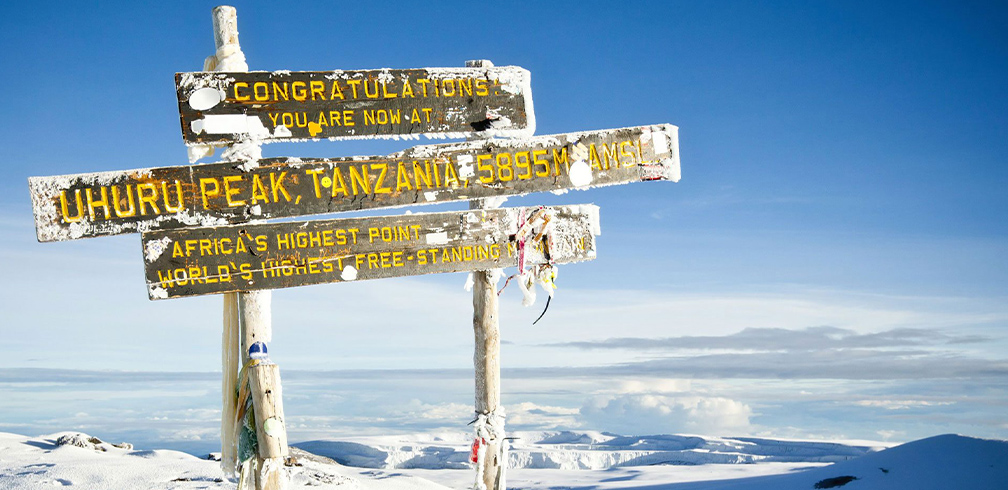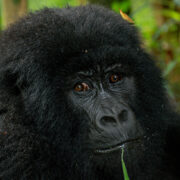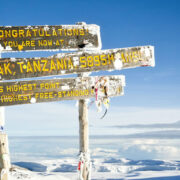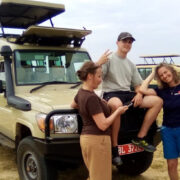
Climbing Mount Kilimanjaro: Routes, Tips.
Mount Kilimanjaro, Tanzania’s crowning glory, is not just the highest freestanding mountain in Africa — it’s a symbol of challenge, perseverance, and awe. Whether you aspire to reach Uhuru Peak or simply enjoy trekking through dramatic landscapes, this guide will help you prepare for a safer, more memorable climb.
- The Routes & Their Differences
There are seven official routes up Kilimanjaro: Marangu, Machame, Lemosho, Rongai, Shira, Umbwe, and Western Breach / Breach-extension options. Each has its own character in terms of scenery, slope, difficulty, accommodation, and crowding.
National Geographic
Marangu is known as the “Coca-Cola Route” — one of the more accessible, with hut accommodations. However, it is also more crowded and has less time for acclimatization in its shorter versions.
National Geographic
Routes like Machame and Lemosho are longer, offer more gradual elevation gain, thus higher chances of reaching the summit successfully, more varied views, and a quieter trail.
National Geographic
- Altitude, Climate Zones & What You’ll Experience
As you climb, you cross five climate zones: rainforest, heath, alpine, desert/alpine desert, and arctic at the summit.
National Geographic
Wildlife: Lower on the mountain you might see monkeys, birds, and forest species. Higher up, vegetation thins and you face colder, more exposed conditions.
National Geographic
Weather: Temperatures vary widely. At the base, warm or humid; near the top, below freezing at night. Layers, good gear, and acclimatization are essential.
National Geographic
- How Many Days & Acclimatization
Most climbs take 5 to 9 days — fewer days means quicker ascent but risks altitude sickness and lower summit success rate. Longer routes increase chances of acclimatization and enjoyment.
National Geographic
“Pole-pole” (slow, steady) is the Swahili motto for good reason: going slowly helps the body adjust to thinner air and reduces risk of altitude problems.
National Geographic
- Best Time to Climb
Dry seasons are the best: January-March, and June-October. During these periods, you’re more likely to have clear skies, less rain, firmer trails.
National Geographic
Avoid the long rains (March-May) and short rains (November-December) if possible — though experienced climbers and well-prepared groups do climb then. Water, mud, and trail erosion complicate climb.
National Geographic
- Gear & Preparation Tips
Clothing: layered clothing for varying climates: base layers, insulating layers, waterproof shell, warm hat / gloves.
National Geographic
Footwear: good boots, ideally broken in before the trip. Trekking poles help, especially on steep and rocky sections.
Other essentials: sleeping bag rated for low temps, headlamp, sun protection, enough water. Prepare your body with walks / hikes ahead of the trip.
- Safety, Guides & Costs
Always climb with a certified guide, and usually many porters to carry gear. Guide safety and experience are crucial.
Permits and park fees are required. Costs vary depending on route, company, level of service, group size. Always check what is included (meals, tents/huts, rescue in case of emergency).
Altitude sickness is real: know the symptoms (headache, nausea, dizziness), take your time, stay hydrated, and respect your body’s limits.
Conclusion
Climbing Kilimanjaro is more than reaching a peak—it’s a journey through shifting landscapes, elements, and your own limits. With the right route, gear, mindset, and guide, summiting Uhuru Peak becomes possible. Whether for a life-changing adventure or a spiritual quest, Kilimanjaro offers you a chance to touch the sky. Plan well, respect the mountain, and cherish every moment.
Recent Posts
Your Complete Guide to Bwindi & Mgahinga
Climbing Mount Kilimanjaro: Routes, Tips.
Top Safari Destinations in East Africa You Must Visit
All Categories

Thailand





